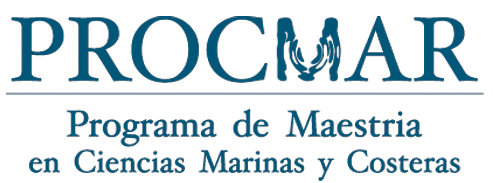|
ISSN: 1659-455X • e-ISSN: 1659-407X REVMAR REVISTA CIENCIAS MARINAS Y COSTERAS
Recepción 11 enero 2023 • Corregido 31 julio 2023 • Aceptado 1 agosto 2023 Predation of the fiddler crab, Minuca osa (Brachyura: Ocypodidae), by Eudocimus albus (Pelecaniformes: Threskiornithidae) from Ponuga, Veraguas, Panama Depredación del cangrejo violinista, Minuca osa (Brachyura: Ocypodidae), por Eudocimus albus (Pelecaniformes: Threskiornithidae) en Ponuga, Veraguas, Panamá Roberto C. Lombardo González1* ABSTRACT Numerous avian species prey on fiddler crabs, yet the ecological relationships involving Minuca osa crabs and their predators remain poorly understood. We report the first documented cases of M. osa predation by White Ibis, Eudocimus albus. Three distinct predation events were observed: June 3rd, 2021, November 10th, 2022, and November 25th, 2022, in the Gulf of Montijo, Veraguas, Panama. Examination of E. albus feces provided confirmation of such predator-prey interaction. Keywords: White Ibis, Uca, mangrove, chela, camera trap. RESUMEN Muchas aves depredan cangrejos violinistas, pero las relaciones ecológicas entre Minuca osa y sus depredadores aviares son poco conocidas. Se reportan los primeros tres casos documentados de depredación de M. osa por Ibis Blanco, Eudocimus albus: el 3 de junio de 2021, así como el 10 y el 25 de noviembre de 2022, en el golfo de Montijo, Veraguas, Panamá. Examen de las heces de E. albus confirmó la interacción depredador-presa. Palabras clave: Ibis Blanco, Uca, manglar, quela, cámara trampa. Fiddler crabs are semi-terrestrial decapod crustaceans that exhibit marked sexual dimorphism, with males possessing an extreme degree of cheliped asymmetry. Presently, there are 106 accepted fiddler crab species (Crane, 1975; Rosenberg, 2014), of which 28 are in Panama’s Pacific (Crane, 1975; Rosenberg, 2014; Rosenberg, 2020) including Minuca osa (Lombardo, 2022). The first reports of Minuca osa from Costa Rica (Landstorfer & Schubart, 2010) and the Eastern Gulf of Montijo (Lombardo, 2022) in Panama revealed that there is no published literature on the ecological links between M. osa and its predators, activity patterns, or social interactions. Fiddler crabs are consumed by several avian predators, including shorebirds (Charadriiformes), rails (Gruiformes), and wading birds (Ciconiiformes); see Zwarts (1985) and Ens et al. (1993) for a comprehensive review. In Panama, known fiddler crab predators include three species of plovers, Charadrius semipalmatus, C. collark, and C. wilsonia (Gelasimus panamensis, Leptuca inaequalis, and L. beebei; Strauch & Abele, 1979), as well as Great-tailed Crackle (Cassidix mexicanus) (L. terpsichores; Kim et al. 2007). Other fiddler crab predators present in Panama include the Snowy Egret (Egretta thula), Herring Gull (Larus argentatus) (Crane, 1941), Cattle Egret (Bubulcus ibis), and White Ibis (Eudocimus albus) (Kushlan, 1979; Christy, 1982; Christy, 1983); however, confirmed cases are unknown. On the other hand, the White Ibis, Eudocimus albus (Pelecaniformes: Threskiornithidae), is one of the most abundant long-legged wading birds in southeastern North America (Kushlan, 1979; Frederick et al. 1996). They reside in freshwater and estuarine wetlands and subsist on small fish, crustaceans, and aquatic invertebrates. Their breeding habitat spans from coastal Colombia and northeastern Brazil to Virginia and possibly Cuba and Hispaniola (Frederick et al. 1996). White ibises are known to feed on a variety of fiddler crabs (Kushlan, 1979), including documented cases in Leptuca pugilator (Christy, 1982; Christy, 1983; Bildstein et al. 1989; Nomann & Pennings, 1998) and Minuca pugnax (Nomann & Pennings, 1998); however, there is no information on specific prey-predator interactions between M. osa and E. albus. In the Eastern Gulf of Montijo in Panama, a colony of M. osa under study (since 2021) has been intermittently visited by E. albus; both juveniles and adults were observed exploring the substrate with their beaks, primarily over M. osa burrows. In view of the potential prey-predator interaction between M. osa and E. albus, the objective of this study was to document and clarify instances of predation by E. albus. The sampling site in the Ponuga River (07° 51ʼ 51.3756ʼʼ N, -081° 00ʼ 52.6248ʼʼ W) is located within the Eastern Gulf of Montijo, Pacific Panama. It is characterized by a long rainy season (April-December), mild flooding during spring tides and open understory space bellow the canopy of Prioria copaifera and Avicennia germinans trees (Lombardo & Rojas, 2022). A colony of M. osa (Fig. 1A) inhabits the site, where E. albus juveniles (Fig. 1B) as well as adults (Fig. 1C) search for food. The site was monitored for three days monthly to directly observe E. albus predation on fiddler crabs, from January to June 2021 and November 2022 to January 2023. Monitoring took place from the early morning to late afternoon (6:30 a.m. - 4:00 p.m.). All attempts to directly observe predation events were aided by using binoculars (Bushnell 10 x 42) fitted with a camera (iPhone 12 - ƒ/1.6, 12MP) for photography and video. The November 2022–January 2023 monitoring period included five digital camera traps (UOVision UV-557, 5MP, CMOS-1.2s) distributed around the M. osa burrow patch to capture video of behavior without disturbance. Cameras were attached to surrounding trees at a minimum height of 1.2 m. To confirm M. osa consumption, ibis’ droppings were examined for crab remains. Ibises were identified with Angehr & Dean (2010) field guide; crabs and their remains in ibis’ droppings were identified with taxonomical keys (Crane, 1975; Landstorfer & Schubart, 2010; Shih et al. 2016; Rosenberg, 2020).
Fig. 1. Fiddler crab (Minuca osa) and White Ibis (Eudocimus albus) from Ponuga, Veraguas, Panama. A: Male (right) and female (left) M. osa in their natural habitat. B: White Ibis juvenile walking over burrow patch. C: Flock of adult and juvenile White Ibis. Scale bars: A = 35 mm, B = 20 mm, ♂ and ♀ = 10 mm Fig. 1. Cangrejo violinista (Minuca osa) e Ibis Blanco (Eudocimus albus) en Ponuga, Veraguas, Panamá. A: M. osa macho (derecha) y hembra (izquierda) en su hábitat natural. B: Ibis Blanco juvenil caminando sobre parche de madrigueras. C: Congregación de Ibis Blanco, adultos y juveniles. Escala: A = 35 mm, B = 20 mm, ♂ y ♀ = 10 mm White Ibis walked parsimoniously searching for food over burrows during low tide and visited the site only during rainy season months, an action we witnessed in 16 occasions. Out of these 16 occasions, predation on M. osa was observed three times: June 3rd, 2021, November 10th and 25th, 2022. The three events occurred in the early morning hours and were observed directly; the predation event from November 25th was captured on video through binoculars (Fig. 2). When walking through burrow patches, ibises did so individually or in small groups (2-5) and targeted crabs outside their burrows. White Ibises also introduced their down curving beak into burrows, sometimes turning their head as to follow burrow curvature; only one instance of capture was observed with this approach (November 10th, 2022). Handling of prey took 9-16 seconds and likely broke the cephalothorax, which seemed to neutralize the major chelae of males. This was achieved by moving the crab from the tip of the beak to its base, where more pressure could be applied; then, they were ingested (Fig. 2, Appx. 1). Examination of E. albus droppings confirmed M. osa is among the prey items consumed, at least males as determined by major claw features (Fig. 3). The claw in Figure 3C (circle) may correspond to a Sesarmid crab species that shares space with M. osa.
Fig. 2. Photographic sequence of predation by a juvenile White Ibis (Eudocimus albus) on Minuca osa from Ponuga, Veraguas, Panama. Still images should be interpreted starting from the upper left frame to the lower right; see link (https://youtu.be/JA8rjwRw-Zo) for Appendix 1 video Fig. 2. Secuencia de depredación por un juvenil de Ibis Blanco (Eudocimus albus) sobre Minuca osa en Ponuga, Veraguas, Panamá. Las imágenes fijas deben interpretarse desde el marco superior izquierdo hasta el inferior derecho; vea el vínculo (https://youtu.be/JA8rjwRw-Zo) para video del apéndice 1
Fig. 3. Crab remains on White Ibis (Eudocimus albus) droppings from Ponuga, Veraguas, Panama. A: Various crab exoskeleton fragments; the white circle represents a male Minuca osa major claw. B: Four morphological characters (black & white triangles) from the major claw corresponding to Minuca osa found in White Ibis droppings. C: Fragments of at least two crab species contained in White Ibis droppings; Minuca osa (lower right corner circle) and a Sesarmid crab (small circle and crop). Scale bars: A = 40 mm, B = 15 mm, C = 5 mm Fig. 3. Restos de cangrejo en heces de Ibis Blanco (Eudocimus albus) de Ponuga, Veraguas, Panamá. A: Fragmentos varios de exoesqueleto de cangrejo; el círculo blanco representa la quela mayor de Minuca osa, macho. B: Cuatro caracteres morfológicos (triángulos negro y blanco) de la quela mayor correspondiente a Minuca osa encontrada en heces de Ibis Blanco. C: Fragmentos de al menos dos especies de cangrejos contenidos en heces de Ibis Blanco; Minuca osa (círculo inferior derecho) y un cangrejo sesarmido (círculo pequeño y recuadro). Escala: A = 40 mm, B = 15 mm, C = 5 mm When approached by an ibis, M. osa males raised the major chela, displaying the merus while raising the body. Crabs briefly maintained this posture and waved by jerking the chela in an outward motion, then retreated inside the burrow. Female crabs extended their chelae forward, pointing downward, and lifted them while raising their bodies; then they dashed for the burrow. During December 2022 and January 2023, other potential avian predators were recorded. Camera traps captured Black Vultures (Coragyps atratus), Black Hawks (Buteogallus anthracinus), and Grey-necked Wood Rails (Aramides cajaneus) occasionally wandering over burrow patches, but no predation events were observed. Cardisoma crassum juveniles, Leptuca pygmaea, Minuca herradurensis, and other unidentified Sesarmid crab species share space with M. osa; however, direct observation and ibis droppings examination confirmed, for the first time, that M. osa is also preyed upon by E. albus. White Ibises visited our site intermittently throughout the year but were seen walking over burrows and probing only during rainy season. This is in line with previous studies on other fiddler crab species as temperature and humidity are limiting factors to their activity pattern (Kerr, 2015; da Silva et al. 2020). Of the other three bird species observed in our study, A. cajaneus is known to heavily consume crab (Silva e Silva & Olmos, 2015; Villegas-Retana & Picado-Masís, 2021); however, we did not observe A. cajaneus preying on M. osa perhaps due to short camera deployment. More camera traps might be needed to determine if this bird species preys on M. osa as well. Interestingly, ibis droppings in this study consisted mainly of crab remains, confirming M. osa is a part of E. albus diet. However, quantitative analysis is required to further determine the importance of M. osa compared to other diet components across habitats and seasons in E. albus adults and juveniles (Kushlan, 1979; Zwarts, 1985; Heath et al. 2020). M. osa response to predator approach was similar to other fiddler crab species, where major and minor claw, legs and body movements could serve the function of attracting a mate, deterring rivals or avoiding predators (Crane, 1975; Pope, 2005). Male fiddler crabs use their large, sexually-selected claws as weapons during inter-male conflict and courting (Crane, 1975; Dennenmoser & Christy, 2013). The large claw on male fiddler crabs can be used as a weapon to dissuade predators. If these claws cause variation in prey preference by predators, this may influence their evolution (Bildstein et al. 1989; Backwell et al. 1998). In fact, sex specific and size differences in prey choice by birds have been reported in other fiddler crab species (Zwarts, 1985; Bildstein et al. 1989; Ens et al. 1993; Backwell et al. 1998; Koga et al. 2001). Along similar lines, M. osa individuals are larger relative to other Minuca species (Lombardo, 2022); thus, experimental manipulation of M. osa size in prey selectivity and predator avoidance behavior trials could be relatively easy due to a wider range of available size classes (Christy, 2007). This report paves the way to answering various questions regarding the ecology of M. osa and its predators and represents a first step for such behavioral ecology studies. The presented results further our understanding of the ecology, behavior, and natural history of M. osa and E. albus and add to the growing body of literature on fiddler crab predation, as evidenced by previous studies by Gruber et al. (2019), Ribeiro et al. (2019), and Takeshita & Nishiumi (2022). Angehr, G. R. & Dean, R. (2010). The birds of Panama: a field guide (1st ed.). U.S.A A Zona Tropical Publication, Comstock Publishing Associates, Cornell University Press. Backwell, P. R. Y., O’Hara, P. D. & Christy, J. H. (1998). Prey availability and selective foraging in shorebirds. Anim. Behav., 55(6), 1659-1667. https://doi.org/10.1006/anbe.1997.0713 Bildstein, K. L., McDowell, S. G. & Brisbin, I. L. (1989). Consequences of sexual dimorphism in sand fiddler crabs, Uca pugilator: differential vulnerability to avian predation. Anim. Behav., 37(1), 140-152. https://doi.org/10.1016/0003-3472(89)90014-6 Christy, J. H. (1982). Burrow structure and use in the sand fiddler crab, Uca pugilator (Bosc). Anim. Behav., 30(3), 687-694. https://doi.org/10.1016/S0003-3472(82)80139-5 Christy, J. H. (1983). Female choice in the resource-defense mating system of the sand fiddler crab, Uca pugilator. Behav. Ecol. Sociobiol., 12(2), 169-180. https://doi.org/10.1007/BF00343209 Christy, J. H. (2007). Predation and the reproductive behavior of fiddler crabs (Genus Uca). In E. J. Duffy & M. Thiel (Eds.), Evolutionary ecology of social and sexual systems: Crustaceans as model organisms (pp. 211-231). U.S.A.: Oxford University Press. Crane, J. (1941). Eastern Pacific expeditions of the New York Zoological Society. XXVI. Crabs of the genus Uca from the west coast of Central America. Zool. Sci. Contrib. N.Y. Zool. Soc., 26, 145-208. Crane, J. (1975). Fiddler crabs of the world: Ocypididae: Genus UCA (1st ed.). U.S.A.: Princeton University Press. https://doi.org/https://doi.org/10.1515/9781400867936 da Silva, B., Miyai, C. A., Augusto, A., & Costa, T. M. (2020). Effects of temperature increase on the physiology and behavior of fiddler crabs. Physiol. Behav., 215, 112765. https://doi.org/10.1016/j.physbeh.2019.112765 Dennenmoser, S. & Christy, J. H. (2013). The design of a beautiful weapon: Compensation for opposing sexual selection on a trait with two functions. Evolution (N. Y)., 67(4), 1181-1188. https://doi.org/10.1111/evo.12018 Ens, B. J., Klaassen, M. & Zwarts, L. (1993). Flocking and feeding in the fiddler crab (Uca tangeri): Prey availability as risk-taking behaviour. Netherlands J. Sea Res., 31(4), 477-494. Frederick, P. C., Bildstein, K. L., Fleury, B. & Ogden, J. (1996). Conservation of large, nomadic populations of White Ibises (Eudocimus albus) in the United States. Conserv. Biol., 10(1), 203-216. Gruber, J., Kahn, A. & Backwell, P. R. Y. (2019). Risks and rewards: balancing costs and benefits of predator avoidance in a fiddler crab. Anim. Behav., 158, 9-13. https://doi.org/10.1016/j.anbehav.2019.09.014 Heath, J. A., Frederick, P. C., Kushlan, J. A., & Bildstein, K. L. (2020). White Ibis Eudocimus albus. In A. F. Poole (Ed.), Birds of the World (Vol. 1). Cornell Lab of Ornithology. https://doi.org/10.2173/bow.whiibi.01 Kerr, K. A. (2015). Decreased temperature results in daytime larval release by the fiddler crab Uca deichmanni Rathbun, 1935. J. Crustac. Biol., 35(2), 185-190. https://doi.org/10.1163/1937240X-00002334 Kim, T. W., Christy, J. H., & Choe, J. C. (2007). A preference for a sexual signal keeps females safe. PLoS ONE, 2(5), e422. https://doi.org/10.1371/journal.pone.0000422 Koga, T., Backwell, P. R. Y., Christy, J. H., Murai, M. & Kasuya, E. (2001). Male-biased predation of a fiddler crab. Anim. Behav., 62(2), 201-207. Kushlan, J. A. (1979). Feeding ecology and prey selection in the White Ibis. Condor, 81(4), 376-389. https://doi.org/10.2307/1366963 Landstorfer, R. B. & Schubart, C. D. (2010). A phylogeny of Pacific fiddler crabs of the subgenus Minuca (Crustacea, Brachyura, Ocypodidae: Uca) with the description of a new species from a tropical gulf in Pacific Costa Rica. J. Zool. Syst. Evol. Res., 48(3), 213-218. https://doi.org/10.1111/j.1439-0469.2009.00554.x Lombardo, R. C. (2022). First record of the Fiddler Crab, Minuca osa from the Eastern Montijo Gulf, Panama. Rev. Cien. Mar. Cost., 14(2), 27-35. https://doi.org/10.15359/revmar.14-2.2 Lombardo, R. C. & Rojas, M. (2022). Burrow fidelity in the blue crab, Cardisoma crassum Smith, 1870 (Brachyura: Gecarcinidae) from the Ponuga River, Veraguas, Panama. Nauplius, 30, e2022033. https://doi.org/10.1590/2358-2936e2022033 Nomann, B. E. & Pennings, S. C. (1998). Fiddler crab-vegetation interactions in hypersaline habitats. J. Exp. Mar. Bio. Ecol., 225(1), 53-68. https://doi.org/10.1016/S0022-0981(97)00209-8 Pope, D. S. (2005). Waving in a crowd: fiddler crabs signal in networks. In P. McGregor (Ed.), Animal Communication Networks (pp. 252–276). Cambridge University Press. United Kingdom. https://doi.org/10.1017/CBO9780511610363.016 Ribeiro, P. D., Navarro, D. D., Jaureguy, L. M., Daleo, P., & Iribarne, O. O. (2019). Evaluating the potential impact of bird predation on the SW Atlantic fiddler crab Leptuca uruguayensis. Helgol. Mar. Res., 73(1), 1-12. https://doi.org/10.1186/s10152-019-0527-9 Rosenberg, M. S. (2014). Contextual cross-referencing of species names for fiddler crabs (Genus Uca): an experiment in cyber-taxonomy. PLoS One, 9(7), e101704. https://doi.org/https://doi.org/10.1371/journal.pone.0101704 Rosenberg, M. S. (2020). A fresh look at the biodiversity lexicon for fiddler crabs (Decapoda: Brachyura: Ocypodidae). Part 2: Biogeography. J. Crustac. Biol., 40(4), 365-383. https://doi.org/10.1093/jcbiol/ruaa029 Shih, H.-T., Ng, P. K. L., Davie, P. J. F., Schubart, C. D., Türkay, M., Naderloo, R., Jones, D. & Liu, M.-Y. (2016). Systematics of the family Ocypodidae Rafinesque, 1815 (Crustacea: Brachyura), based on phylogenetic relationships, with a reorganization of subfamily rankings and a review of the taxonomic status of Uca Leach, 1814, sensu lato and its subgenera. Raffles Bull. Zool., 64, 139-175. Silva e Silva, R. & Olmos, F. (2015). Distribution and natural history of the mangrove-dwelling Gray-necked Wood-Rail, Aramides cajaneus avicenniae Stotz, 1992, in southeastern Brazil. Rev. Bras. Ornitol., 23(4), 368-376. https://doi.org/10.1007/BF03544310 Takeshita, F. & Nishiumi, N. (2022). Social behaviors elevate predation risk in fiddler crabs: quantitative evidence from field observations. Behav. Ecol. Sociobiol., 76(12). https://doi.org/10.1007/s00265-022-03268-5 Villegas-Retana, S. & Picado-Masís, J. (2021). Predation of Gecarcinus quadratus (Decapoda: Gecarcinidae) by Aramides cajaneus (Gruiformes: Rallidae) in Costa Rica. Rev. Cien. Mar. Cos., 13(2), 23-26. https://doi.org/10.15359/revmar.13-2.2 Zwarts, L. (1985). The winter exploitation of fiddler crabs Uca tangeri by waders in Guinea-Bissau. Ardea, 73(1), 3-12. 1 Universidad de Panamá, Centro Regional Universitario de Veraguas. Centro de Capacitación, Investigación y Monitoreo de la Biodiversidad en el Parque Nacional Coiba. roberto.lombardo@up.ac.pa* ORCID: https://orcid.org/0000-0002-0279-8621 |
/revmar14-2.jpg)
/Fig1.jpg)
/Fig_2.jpg)
/Fig3.png)




